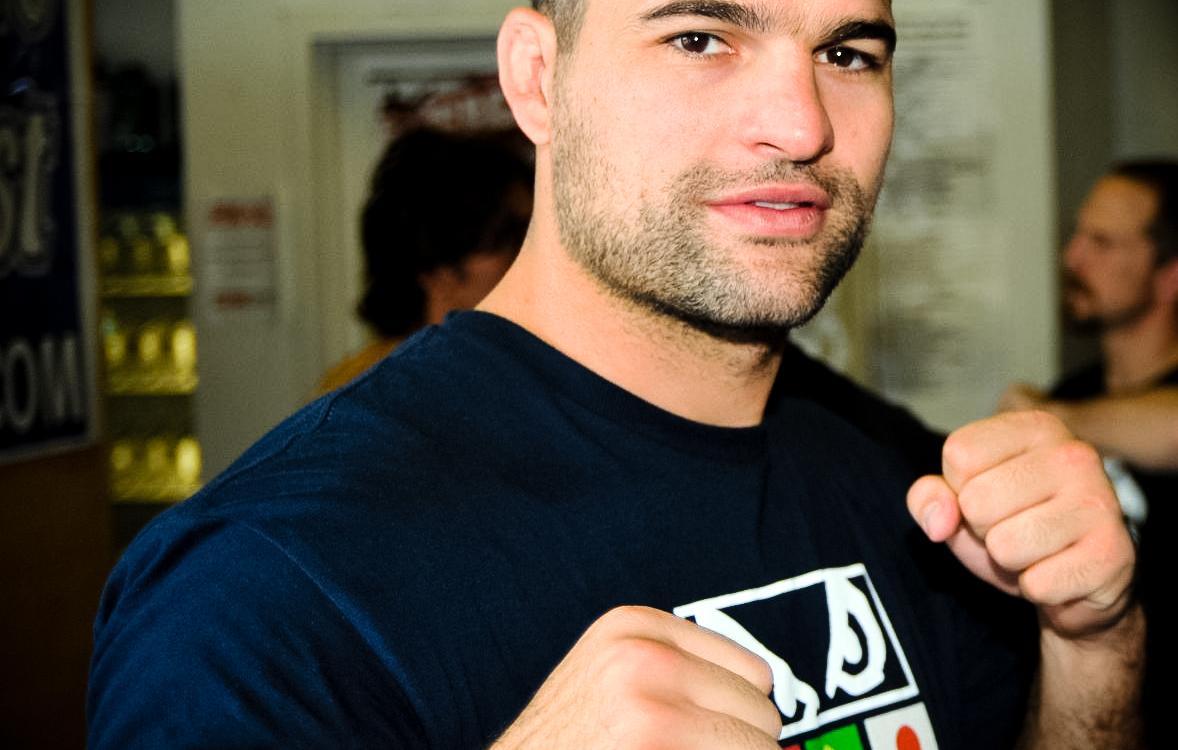
Imitating Boris Gulko, Part II
I'm back with some more Golden Gulko Nuggets.

"More Golden Gulko Nuggets, please!!" "Honey, slow down, one box of Golden Gulko Nuggets costs 20 Euros!"
Do you remember what Gulko played in the following position?
What do you have to do when you have a time advantage? That's right. Now let's continue. We're going to go forward and then backward so please just try your best to follow me. Study the following position and try to figure out White's best move.
What else should you do if you have an advantage in time? Gulko says, "When you have an advantage in time you should create tension and make the position sharper." This makes perfect sense. If you have a time advantage then obviously your pieces are going to be better mobilized than your opponent's pieces. That means his pieces will be out of position while yours will be in prime position if and when action begins to take place. Look at these fighting stances:

Shogun Rua's stance is great. Hands up high ready to punch or block and his hips are square so that he can kick or check with his legs.

Edit: Somerswerd has brought it to my attention that these kids are standing perfectly fine in their sport of Taekwondo. In Taekwondo punches to the head aren't allowed and so leaving one's hands by his sides allows him to be fluid. I chose this example because it shows a poor stance in relation to fighting. There are some amazing Taekwondo guys out there and when they fight in MMA they do change their stance. I am just using this photo to illustrate my point. But good lawd is it painful to see people fighting (even if it is just point sparring) with their hands at their waste! And thank you Somerswerd for the heads up!
These kids are really cute but their stance is weak. Their hands aren't up and their legs are too far apart so that if they go forward their balance will be severely compromised. Don't get me wrong. I respect these kids totally for having the courage to compete at that age. I wish them the best and I can say without a doubt when I was their age I did not have that kind of courage. This is a picture of me when I was around 10 years old after getting hit with a pillow.

"And the button made contact with my ear! The cartilage in my ear is still growing!"
In chess, a time advantage over your opponent means that you have a better stance than he does. Therefore you should look to engage. Punch or kick him and he won't be able to block or counterattack, or shoot a double-leg and he won't be able to sprawl because he is so far out of position. Chess is the same; look to make contact and threats and offer exchanges because he won't be able to block or counterattack or move out of the way as effectively as you.
*PAUSE* I want to address a doubt I got from the last article:
SalòWolf (interesting movie tastes  ) remarked,"Looking at the position, I can't understand how white will "pressure" the e5 pawn if Black just plays defensively, say Nd7, f6, Ne7-c6. Black can protect that pawn to dangerous excess
) remarked,"Looking at the position, I can't understand how white will "pressure" the e5 pawn if Black just plays defensively, say Nd7, f6, Ne7-c6. Black can protect that pawn to dangerous excess  - indeed with more units than White can attack it with."
- indeed with more units than White can attack it with."

And that's what Black does  but Gulko masterfully exploits his advantage by switching targets. It's not a numbers game but a hunting game. That's exactly the purpose behind pressuring a square or a diagonal. Gulko isn't going to win the e5 pawn and he knows this. But he will force Black to defend which will create different objects of attack. If Black plays his Knights to c6 and d7, White will plant a big fat Knight on d5 until the cows come home and if Black plays ...f6 he will make his Bishop worse and weaken the e6 square beyond repair.
but Gulko masterfully exploits his advantage by switching targets. It's not a numbers game but a hunting game. That's exactly the purpose behind pressuring a square or a diagonal. Gulko isn't going to win the e5 pawn and he knows this. But he will force Black to defend which will create different objects of attack. If Black plays his Knights to c6 and d7, White will plant a big fat Knight on d5 until the cows come home and if Black plays ...f6 he will make his Bishop worse and weaken the e6 square beyond repair.

This is all part of Gulko's master plan. Something's gotta give. Black either loses the e5 pawn or makes concessions by defending it. Radjabov isn't going to give up a pawn without a fight so he makes concessions and Gulko exploits them. Think of a boxer hitting the body and then finishing up top when his opponent lowers his hands. Check out the following video to see Mike Tyson using the same tactic over and over with devastating effect.
*UNPAUSE*
Alright, back to the matter at hand.
Gulko initiates contact between forces. He offers the exchange of pawns and thus creates tension. He isn't necessarily exchanging as much as he can but rather allowing the pieces to come into contact with each other so that if the opportune moment comes by he'll be ready to pounce. If Black for example tries to connect his rooks immediately then he gets punished:
Now, let's go back to move 8. Take a look at the position and discover what Gulko played; he played a stategically cunning move.
White gets rid of his worst piece for arguably Black's best piece. It's a pleasure seeing Gulko navigate these stratetigic waters with all these elements at play. Radjabov simply exchanged bishops here which led Dr. Sneed to ask, "Why not just 10...f5?"
Well, if you've been paying attention, go ahead and answer the PhD in Clinical Psychology. Go ahead, answer him. Why is 10...f5 bad? Take a minute or a few seconds and tell Dr. Sneed exactly why ...f5 doesn't work.
The active ...f5 doesn't work because Black, having a time disadvantage, is only playing into White's hands by creating tension and making the position sharper. White can take advantage of this strategic mistake with calm natural moves and he'll likely win a pawn in the next 10 moves. The major problem for Black is White's pieces are well placed and they have targets to attack like the e5 and f5 pawns and the weak e6 and f7 squares whereas Black's pieces are badly placed and they have no targets to attack. Take a look at an example line Gulko gives in the book.
Radjabov didn't play ...f5 because he was aware of these strategic goings-on. Aware of his time disadvantage, he sought to do the opposite of what Gulko strove for. When you have a time disadvantage avoid creating an object of attack for your opponent and try to keep the position quiet until you've caught up with his level of development. If you engage and make contact with your opponent then you're risking getting knocked out. Check out the following video to see a guy rush in WITHOUT being in position to attack. This is what could've happened to Radjabov if he had played ...f5 on move 10. (By the way, the guy is totally fine now. He won 2nd place in the Taekwondo tournament that day so it wasn't that bad of a day for him).
When you have a time advantage, create an object of attack and make the position sharp!
We've moved exactly 6 moves foward. Nice. One day I'll get to my game with Almeida 
And here's another video, but this time of Shogun Rua in all-systems-go mode and attacking. When you get a time advantage just think of this video.








